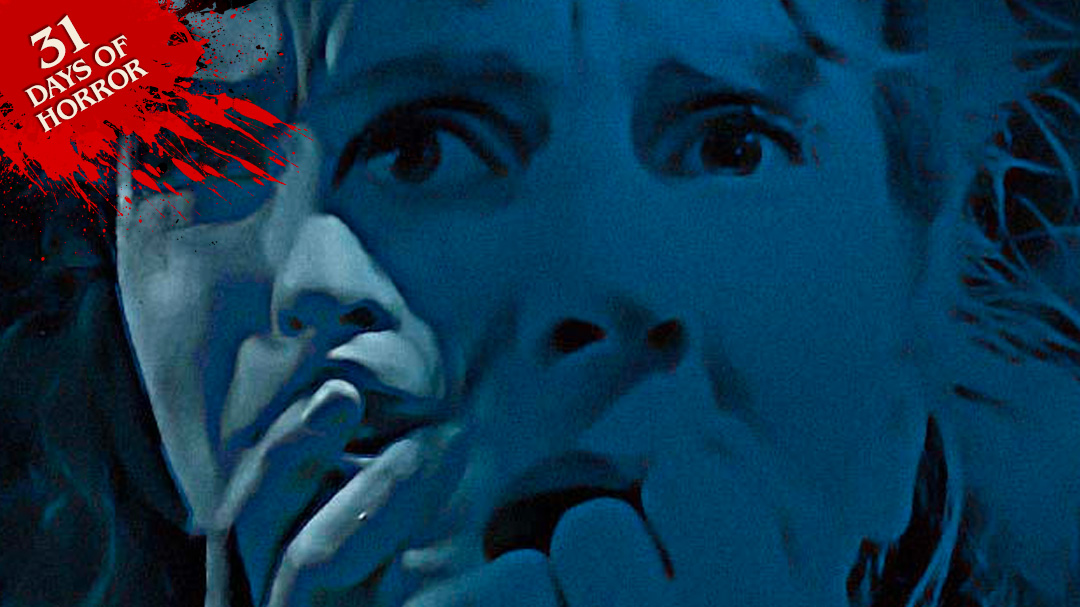It’s easy to see how The Haunting (1999) got made. The 1963 original is considered a classic of the haunted house genre, but it offers mucho opportunity for jazzing up. Does the original deserve its elevated status? Let’s take a look…
The Haunting (1963) is based on Shirley Jackson’s novel The Haunting of Hill House. Shirley Jackson achieved fame with her short story The Lottery and is a critical darling to this day. Her style is similar to that of a driver’s education manual, with all the exciting bits removed.
This dry style carries over to the film. The Haunting is not so much a haunted house movie, as it is a mousy woman movie. Poor little Nell is essentially Cinderella, slaving away in low-station service to her family. She doesn’t get a slipper made of glass, however. She gets an emotional state made of glass. If she existed today, her Instagram would be full of self-affirmation quotes that sound deep but make little sense if one actually thinks them through.
“True wisdom is found…not within the mind…but within the heart…”

We’ve got one chance…my devastating handsomeness…
A Haunting We Will Go
The plot of The Haunting is set into motion when a researcher puts together a team to stay in a haunted house. The goal is to prove the existence of the supernatural. This is as high concept as it gets and offers a ton of potential for a cracking yarn. The team is composed of the researcher, a woman with ESP, the heir of the house, and Nell, who is supposedly receptive to paranormal events due to the fact stones once rained down on her house (maybe The Lottery happened in her backyard).
How will their traits be used to solve the mystery of the haunted house? Their traits aren’t used at all. The researcher does nothing but provide commentary. ESP girl is catty. The mansion’s heir is a sarcastic boozer. And Nell is there to caterwaul her way through the film. Maybe mousy women everywhere are supposed to project their insecurities onto her and feel…validated?
Who knows. It’s all fairly tedious. The motor of the movie ends up being the question of whether the house is actually haunted or if Nell is simply having a breakdown. The nature of the breakdown can be questioned further. Is the house real? Are the characters real? Or does the story exist in Nell’s head as she takes a swan dive off some internal precipice of sanity?
This kind of ambiguity can create a critical darling, but is it entertaining?
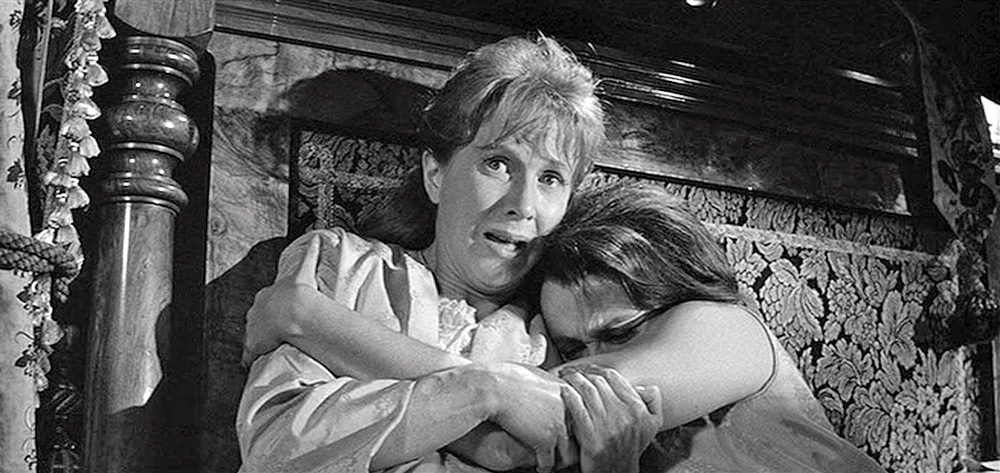
The Residents Of Hill House
The man in the director chair of The Haunting, Robert Wise, has a proven track record: The Day The Earth Stood Still, The Sound of Music, Star Trek: The Motion Picture, and the sublime West Side Story. Wise employs a style on The Haunting that is 1960s TV expressionistic. It would fit right in as an episode from Boris Karloff’s anthology series Thriller.
Heading up the cast is Julie Harris (Gorillas in the Mist, The Dark Half) as Nell. As far as mousy characters go, she is not particularly sympathetic. Claire Bloom (Clash of the Titans, The King’s Speech) plays Theo, a character with ESP. She pegs Nell as an attention seeker. She is probably correct. As the movie goes on, the characters, and the viewer, grow weary of Nell’s histrionics. Theo also has a lesbian aspect, more implicit than explicit. At times, she seems to cast the net for Nell, but these advances cool off as she discovers Nell’s craziness is not directly proportional to her hotness. Rather, it’s an inverse relationship. Nell is way more crazy than attractive.
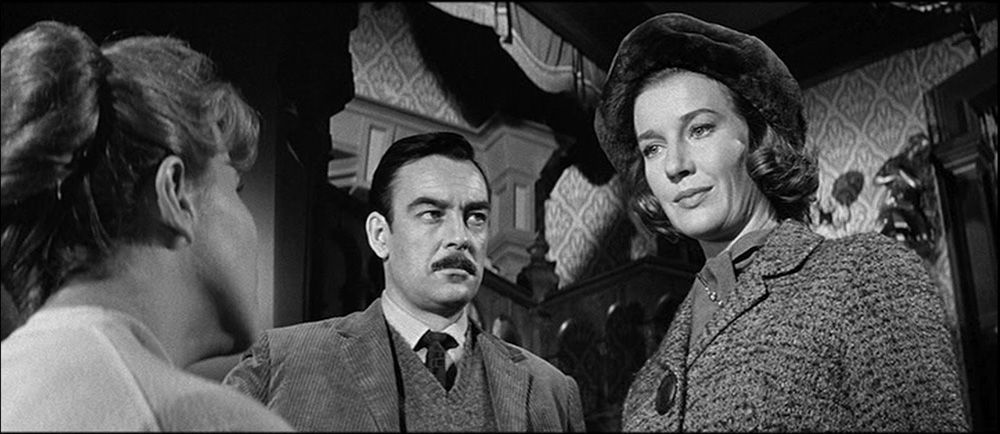
Meanwhile, Richard Johnson (Zombi 2, Laura Croft: Tomb Raider) plays the researcher, Dr. Markway. Johnson does not bring much to the table other than maybe a half-hearted attempt to look like Clark Gable. One of his lines also impressed Rob Zombie enough to make him sample it in Super Charger Heaven. The heir to the mansion, Luke, is performed by Russ Tamblyn (West Side Story, Drive). Tamblyn is wasted in the film, but at least he gets the movie’s coolest line…
My sister wears a moustache, my brother wears a dress. Goodness! Gracious! That’s why I’m a mess!
Wait, sorry…wrong movie…
It ought to be burned down…and the ground sowed with salt.
In a fun surprise, Miss Moneypenny herself, Lois Maxwell, puts in a brief appearance toward the end of the film as Dr. Markway’s wife. This sticks in Nell’s craw, as she develops a crush on Markway.
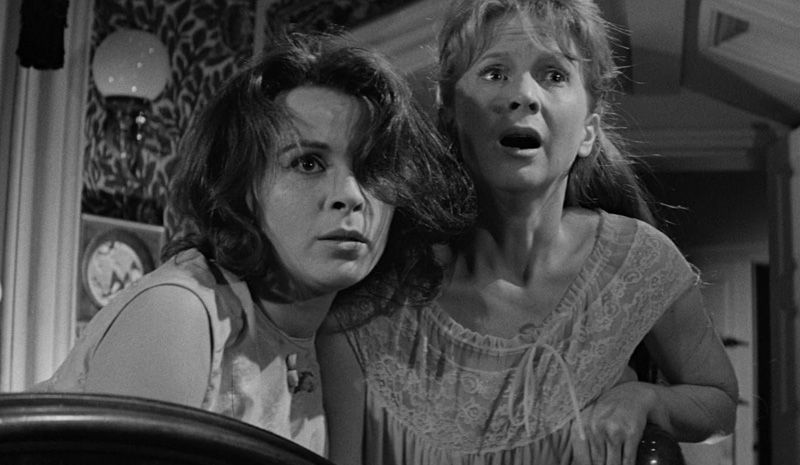
Look out! Someone is calling me out on my victimhood!
Haunting or Daunting?
At the end of the day, Wise and the cast do their job, but The Haunting is handicapped by a couple of things. One, it employs a fairly on-the-nose voiceover. Voiceover in noir can be fun, especially if it has a hard-boiled style. Voiceover that is purely expository gives the impression that no one is properly doing their job, so it has to be spelled out for the viewer.
Yet, the main issue affecting The Haunting is Jackson’s story. It offers little in the way of an effective three-act structure. The first act is fine. The premise is laid out and the characters are introduced as they arrive at the house. The problems develop as the film moves into the second act…and proceed to stay there for the rest of the film until a dour climax.
Not a whole lot happens in the house that offers much for entertainment value. Some banging noises happen; some voices and giggling are heard; a message gets scrawled on the wall; and a door is pressed inward by an unseen force. These events are not limited to Nell’s perception. All of the characters experience them. This fact undermines the breakdown possibility, as it reinforces the notion that the house is genuinely haunted, and it’s exerting its demonic force on Nell.

In that case, if one continues to hold to the breakdown theory, then the house and all of the characters must be figments of Nell’s imagination. The pounding could be her invalid mother calling out to her. Dr. Markway maybe represents her unfilled desire for a husband. Luke might be her longing for financial independence from her domineering family. Perhaps, Theo represents Nell’s propensity for self-sabotage. Meanwhile, the house itself is Nell’s mind, a place of crooked angles, false perception, and doors that shut in one’s face.
The fact that the heart of the haunting is the nursery further supports Nell’s internal struggle against spinsterhood. She is a female incel. The final development that sets her off is the arrival of Dr. Markway’s wife, whom Nell suggests should stay in the nursery because she hopes it will kill the woman. Nell repents of the idea, but by then it is too late. The house has “chosen” the wife, and Nell is out of luck. There is nothing left for her but the same old, same old. She loses her grip and careens out of control.
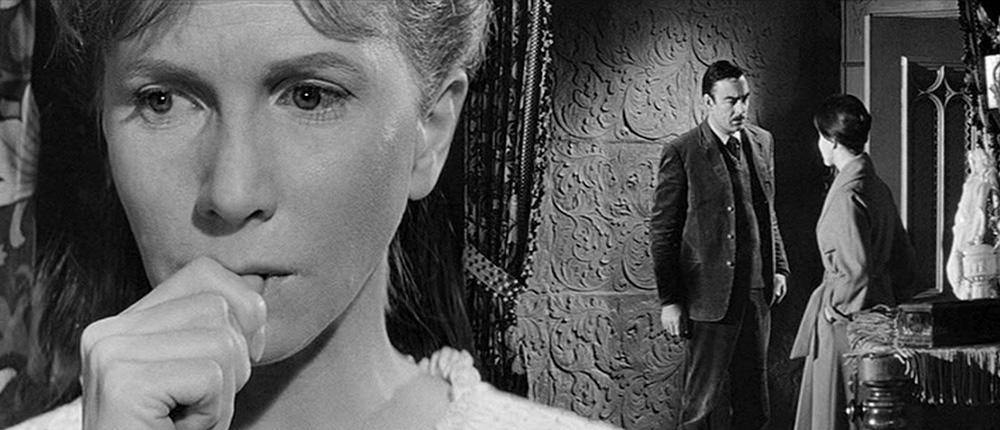
Supernatural or Natural?
Ultimately, the cerebral route is more satisfying because The Haunting is basically a void as far as haunted house movies go. The Legend of Hell House did a better job (albeit still clunky) with the same concept. Meanwhile, The Changeling and Burnt Offerings are more satisfactorily spooky. Oliver Reed trying to playfully drown his son is terrifying, as I can imagine a boozy Reed doing that in real life. Even The House on Haunted Hill (1999) comes off as more entertaining with its scenery-chewing Geoffrey Rush, spastic scares, and Tales-From-The-Crypt sensibility (the original with Vincent Price is fun, too).
In that regard, the 1999 remake of The Haunting with Liam Neeson and company may have had the right idea. It doubled down on the supernatural aspects of the story and tossed the psychological aspects overboard. The remake still doesn’t work, though. The best part of it is the spooky statuary. Otherwise, it is an effects film that is so watered down by the studio that it can’t even match the trashy amusement of The House On Haunted Hill.
An effective middle ground likely exists between The Haunting 1963 and The Haunting 1999. Keep the psychological aspect but bump up the supernatural side. Even something simple like having a statue looking one way in a shot and then the other way in another shot would have been welcome. (Note: It has been brought to my attention that Netflix is doing a House On Haunted Hill series and employs this exact technique.)
At the end of the day, the problems go back to the source material. Shirley Jackson might have a big literary brain, but she lacks the pop of an exciting storyteller. Stephen King considers The Haunting of Hill House as one of the most important horror novels written. Why, though? Because Jackson brought psychological metaphors to the haunted house story? It seems like whenever a writer comes along and deconstructs a popular genre, they are suddenly Faulkner. If a carpenter deconstructs a house, no one cries, amazing! If a baker deconstructs a cake, no one gives them an award. Yet, deconstruct genre entertainment, and you’re an ar-teest.
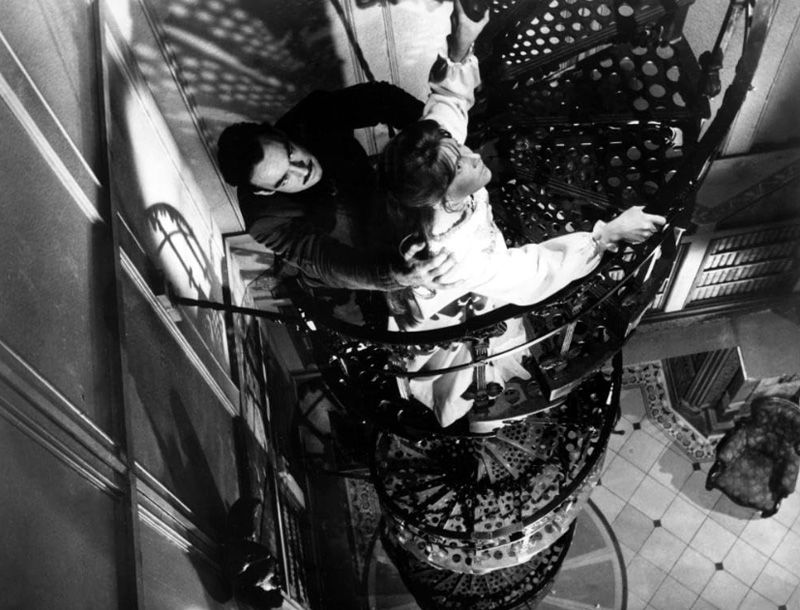
No one is scared of spiral staircases because everyone on the planet wants a spiral staircase.
Not A Haunting Experience
The Haunting can best be summed up by its staircase scene. The house has a rickety spiral staircase that is set up to fall if a character jostles it too much. Eventually, Nell climbs the staircase. It shakes. Will it fall? Oh no, Markway climbs up after her! The staircase is really shaking now! How will they get out of this? Then both of them get to the top…and climb back down again. No harm. No foul.
That’s what you will get out of watching The Haunting (1963). You are set up to watch a classic. What you get is an up-and-down experience that ends up in the same place it started.


